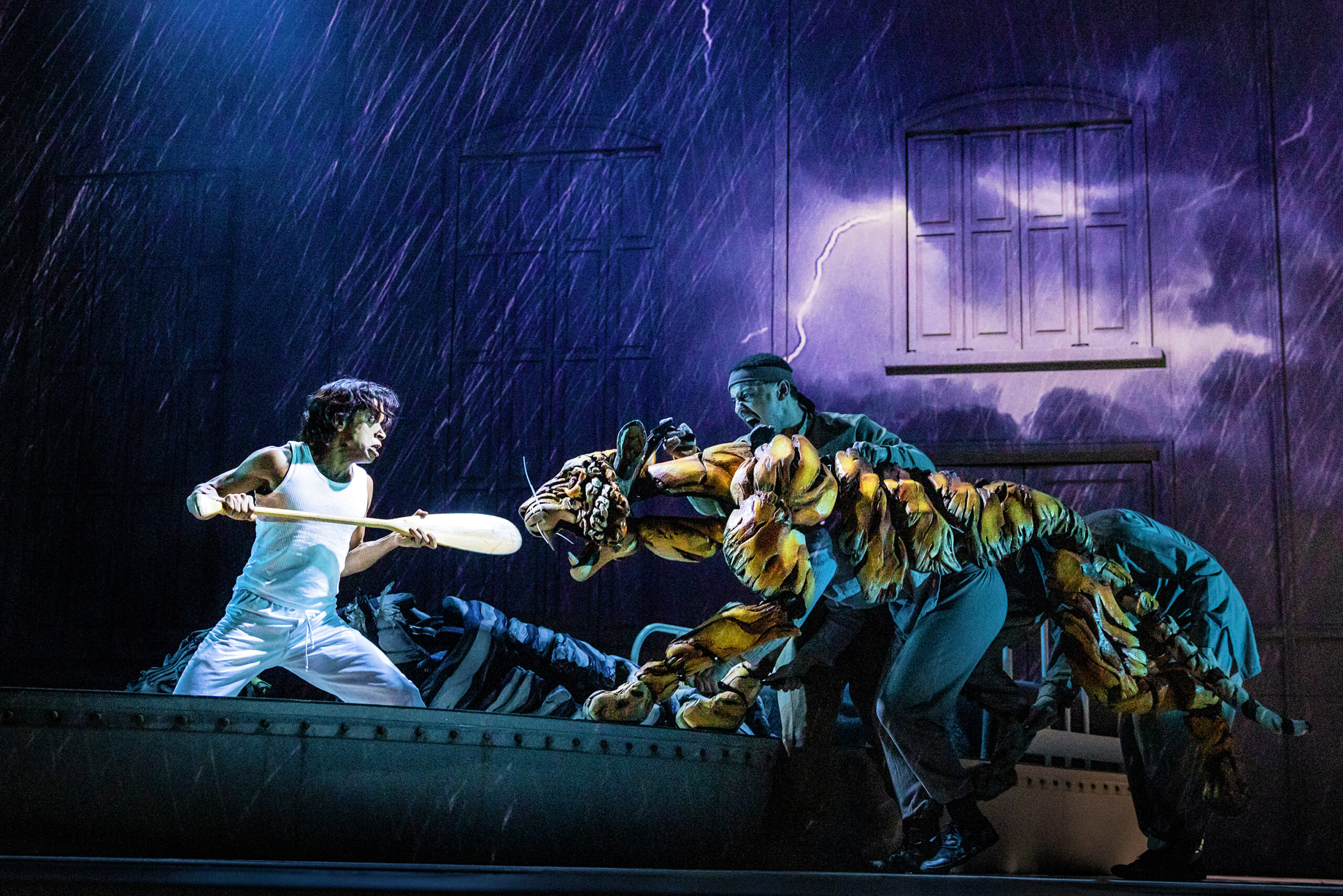How Dancers Help Create the Low-Tech Magic of Onstage Puppetry
Kennedy Kanagawa never imagined that a cow puppet would earn him his Broadway debut. Primarily a musical theater actor and dancer, Kanagawa has been playing the role of the cow, Milky White, in Stephen Sondheim’s Into the Woods for over a year—first at New York City Center Encores!, then on Broadway, and now on the national tour.
He joined the cast as a puppetry novice. “Taking what I knew from dance was incredibly helpful in understanding how to work the puppet,” says Kanagawa. Now, he feels like he and Milky White are one and the same. “We are very symbiotic,” he says of the puppet, who boasts mournful eyes and is around the size of a large dog. “I often use first person when talking about the track.”
Puppets can do things that people can’t, such as move their legs preposterously quickly or fill space 15 or 20 feet above the stage. But they require skilled and agile human bodies to do so, making puppetry and dance a natural pairing. The relationship between these two art forms goes back thousands of years, from Greek mime plays to Japanese bunraku to commedia dell’arte to Bauhaus architect Oskar Schlemmer’s Triadic Ballet. Choreographers seem drawn to puppets: Coppélia, Petrushka, and the dolls in The Nutcracker’s party scene are all dancer imitations of puppets come to life, and newer works like Christopher Wheeldon’s 2012 Cinderella and Alexei Ratmansky’s 2017 Whipped Cream feature whimsical puppetry elements throughout. Life of Pi, which opened on Broadway in March, uses a mix of dancers and puppeteers to bring its cast of zoo animals to life.
“I’ve always aligned myself more with dance than theater,” says Basil Twist, a MacArthur Fellow and puppeteer who collaborated with Wheeldon on Cinderella, The Royal Ballet’s 2014 A Winter’s Tale, and The Joffrey Ballet’s 2016 The Nutcracker, as well as with a number of other dancemakers. “The essential element of puppetry is movement.”
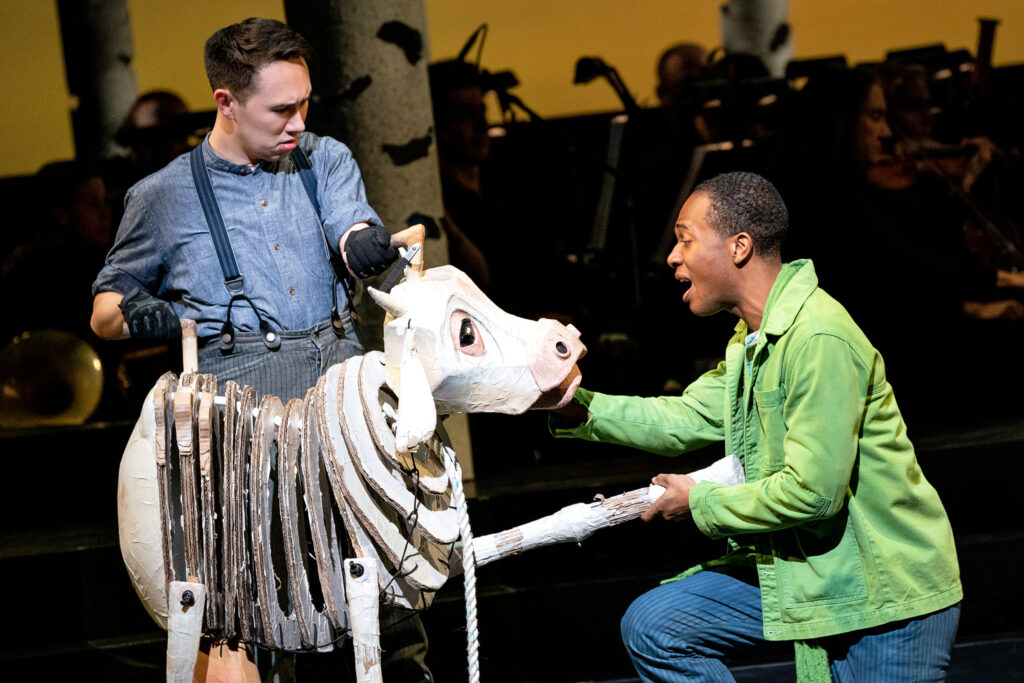
Creating an Image
Twist doesn’t come from a dance background, though his formal puppeteer training includes movement classes, tai chi, and karate. “Dancers in general are fantastic puppeteers,” he says. “It’s about working as an ensemble to create an image, and being devoted with your body towards that image.”
Like many dance artists, Twist relies on mirrors in rehearsal to make this happen. “People are very quick to self-adjust once they can see themselves,” he says. When working on Broadway’s 2017 Charlie and the Chocolate Factory with choreographer Joshua Bergasse, Twist created the Oompa Loompas using “humanette” puppetry. “It’s their own head with a little puppet body strapped to it, and the dancers were on their knees,” explains Twist. “The image was hysterical, but the dancers did not get it until they saw the mirror.” Once able to view themselves, the dancers were hooked: They started using the humanettes to perform numbers from shows like CATS, delighting at the ways they could make the Oompa Loompa bodies move.
When rehearsing Into the Woods, Kanagawa had a human mirror in James Ortiz, the designer who built the Milky White puppet. “When our choreographer Lorin Latarro was teaching us, she’d say something like, ‘On this lyric we’ll do a chassé and then a three-step turn,’ ” says Kanagawa. “I’d just look at James in the audience, like, ‘I’ve got six legs between me and the cow.’ I’d try something and he’d either give me a thumbs-up or a teeter-totter hand, and I’d keep experimenting until it made sense.”
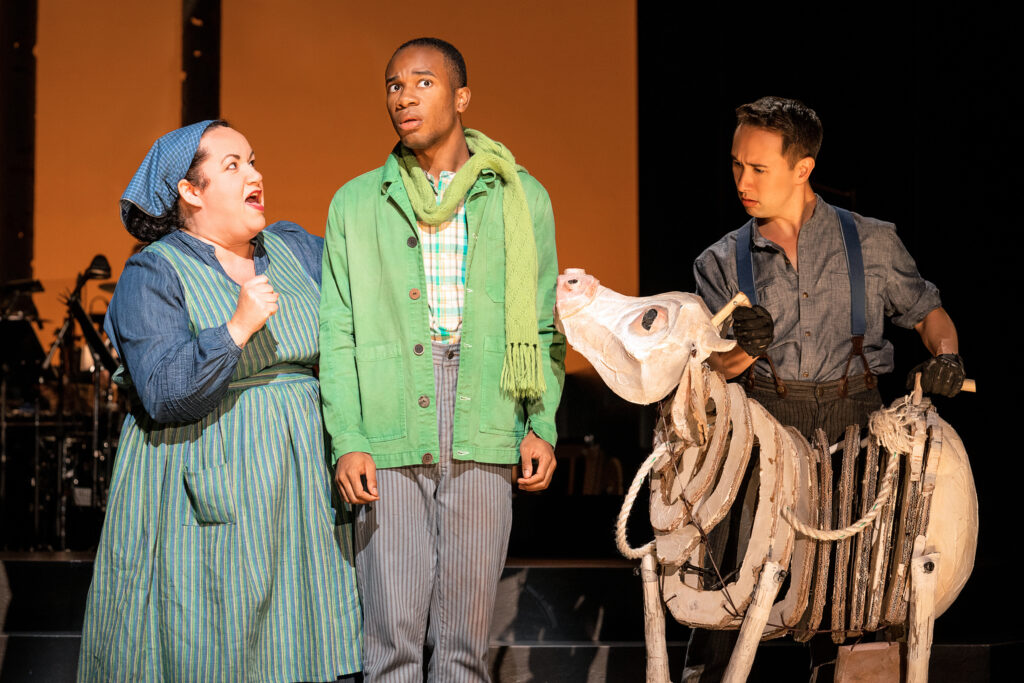
Courtesy Allied Global Marketing.
Communication and Trust
Like Kanagawa, Broadway veteran and dancer Celia Mei Rubin came to Broadway’s Life of Pi without any puppetry experience. In addition to understudying one of the non-puppet leads, she’s part of a group of eight cast members who rotate through animating a life-sized tiger named Richard Parker, an orangutan named Orange Juice, two hyenas, and two zebras. The tiger puppet alone requires three puppeteers to operate (plus a fourth for one scene!). Rubin’s role is known as the “tiger heart”: She hunches inside the puppet’s internal aluminum-plated wood cage and is responsible for giving breath to the creature and controlling its front paws.
Rubin credits her comfort with collaboration, learned from her dance career, with both landing the role and her continued success onstage. In the audition, she says, the creative team seemed as interested in seeing how people worked with each other as they did in the skills they brought into the room.
“In dance, you get very intimate very quickly, just because of the nature of ensemble and partnering work,” she says. “I’m very used to being able to talk to my dance partners about what we need from each other, and puppetry is very similar.”
Clear communication is also crucial for Rubin’s safety. When inside the tiger, she can only see the ground directly in front of her, or the hind paws if she looks behind herself. She relies on cues from the head puppeteer’s feet and breath and on the proprioception she’s honed as a dancer. “I have to go in and just trust the two other people in the puppet with me,” says Rubin.
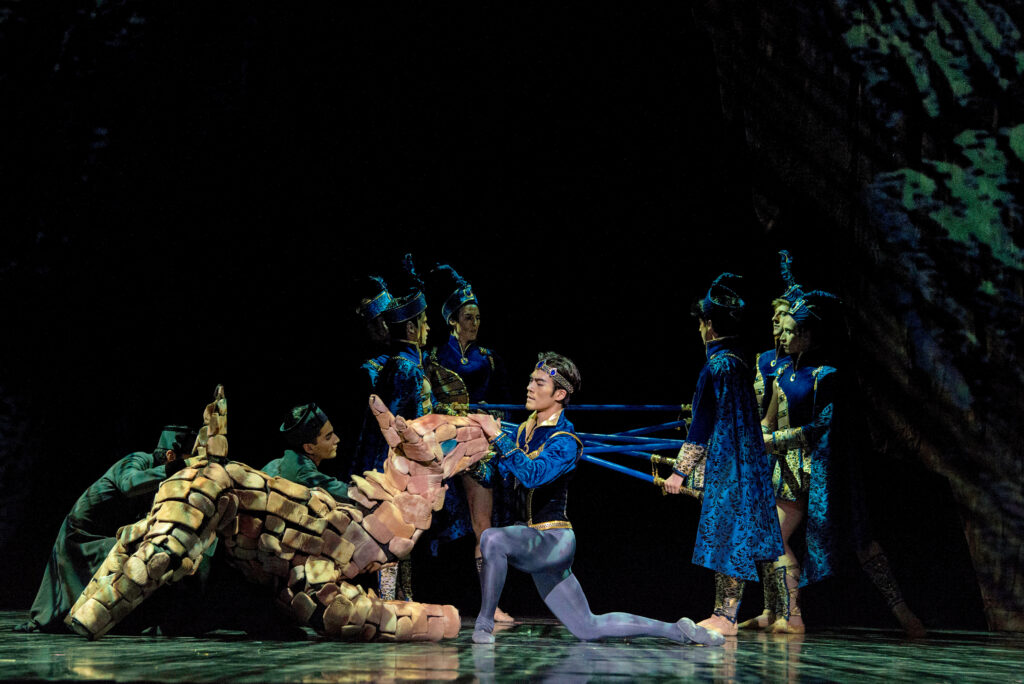
Serving the Whole
Puppetry, which tends to de-emphasize its human performers, can be selfless work. Rubin says toning down dance’s presentational qualities has been one of her biggest challenges. “Sometimes I get a note that when I swipe, it looks like a big dance movement instead of a tiger,” Rubin says. “It’s like undoing 20 years of being in a dance career.”
Although Kanagawa is more visible onstage—he holds Milky White in front of him from two handles, one on her head and one on her hind, and reacts to her actions and emotions—he also had to learn to put himself second. “It was challenging to adapt to having my focus always be down on the cow,” he says.
But the selflessness of puppetry can also suit dancers used to losing themselves in an ensemble. Rubin says that, sometimes, she’s not even sure that the audience realizes that there are three people inside of the tiger. “I have to try to serve the puppet, as opposed to serving the story with my own human body,” she says.
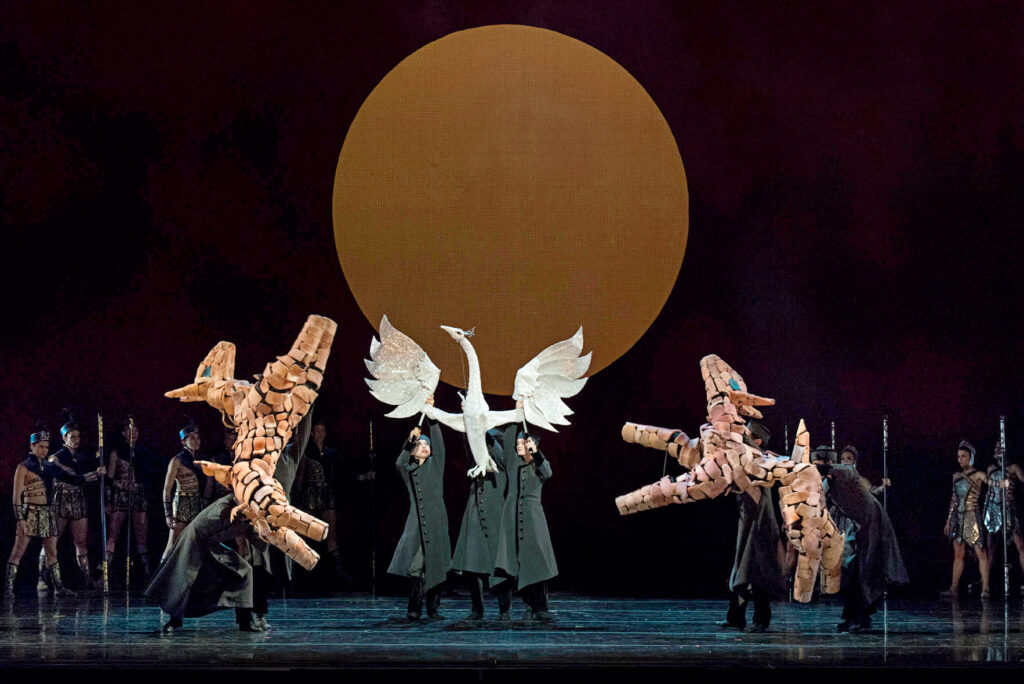
Low-Tech Magic
Like dance, puppetry uses low-tech solutions to create magic onstage, allowing the audience to witness much of the work that goes into its illusions. When Milky White cries, we can see Kanagawa manipulating her body, and when Pi hallucinates that the terrifying tiger Richard Parker transforms into a tough-talking Frenchman, we can appreciate the effort it takes for Rubin and her colleagues to alter their physicality.
“It’s stagecraft that is human-centered,” says Twist. “You can create otherworldly effects, fantastical effects, and animate the stage. It’s enchantment.”
Body Maintenance
Doing the same track eight shows a week is taxing for any performer. But adding the weight and awkward positions included with puppeteering makes it even harder.
When playing the tiger Richard Parker, Celia Mei Rubin, one of the eight puppeteers currently in Broadway’s Life of Pi, is completely bent over, holding rods connected to his front paws. The puppet, which is made of wood, aluminum, and a foam-like material, weighs about 32 pounds on its own. To combat back and leg pain, Rubin has a cross-training plan that includes going to the gym a few times a week, taking a ballet class once a week, and then doing a 15-minute stretch warm-up before going onstage.
Kennedy Kanagawa, who’s been playing Milky White in Into the Woods for the past year, feels the strain of holding the 15-pound puppet at arm’s length mostly in his wrists and elbows. “I’m not able to keep the weight in my core, which puts the strain on my back,” he adds. His physical therapist has built him an extensive warm-up routine which includes twisting foam rods and squeezing putties of different firmness to enhance his wrist and finger strength.
